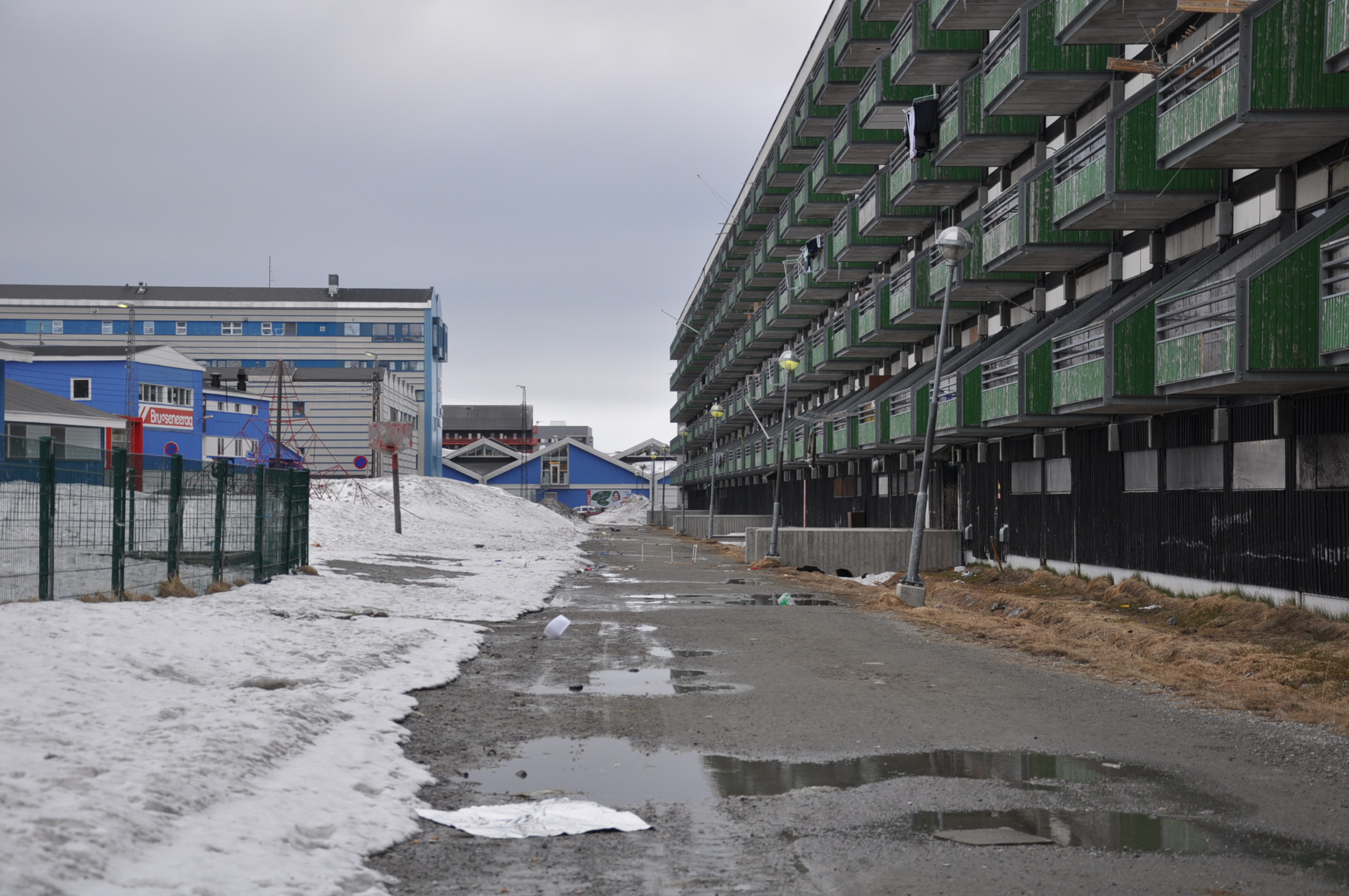Reimagining the future of habitation in Greenland
How a collaborative urban design platform could help a new northern vernacular architecture emerge.

Despite the fact that urbanization in Greenland was once a tool of Danish colonialism, it is actively employed today by the Greenlandic government to strengthen sovereignty. So how can communities in Greenland explore new ways to interact and collectively experiment with alternative urban futures? I propose a virtual innovation platform that seeks to capture Greenland’s public imagination to start a critical discussion that propels the future of habitation in Greenland.
Greenlandic culture has been subject to external influences for many centuries. Geographer Anthony Dzik writes that the most prominent external impacts on Greenland in modern times have been Danish religious missions and governmental programs, World War II, and the Cold War. Furthermore, a history of Danish control has drastically influenced the Greenlandic urban and social landscape.
One key example of this Danish urban influence is the 200-meter-long and five-story-high apartment complex known as “Block P” in Nuuk, Greenland’s capital. Arkitektur DK magazine writes that Block P is a monument of Danish housing policy failure in the 1960s. Representatively for other apartment block projects in that period, Block P was entirely unsuitable for an Inuit lifestyle. For example, hallways were too narrow for people wearing heavy outdoor clothes, and there was no place for their dogs or dogsleds.
Else Løvstrøm, communications officer of Block P’s management association, is quoted in the book Exploring Greenland by saying: “Block P contains all good and all bad. Many have lived harmonious lives in that building, really good lives, but others have had a really hard time. It is very mixed.”
Cultural center Nordatlantens Brygge in Copenhagen writes that Block P was “a type of housing that originated in a decidedly different social structure from that which most of the residents came from: a hunting, fishing society. For those of them who found it particularly difficult to adapt to the new conditions, the move had major personal and social costs and negative consequences.”
Journalist Philip Lauritzen takes an even more critical standpoint. He states that “although [Block P] provided toilets and running water for everyone, [it] soon became an architecturally designed bomb of social maladjustment.” Unfortunately, many of these urban and social challenges still exist today.
To tackle the urban challenges Greenland is facing, we need to identify and closely examine Greenland as a distinct region with unique planning needs. To fully understand those needs, it is critical to listen to the voices and ideas of the local people. Therefore, I propose a virtual innovation platform, The Greenland Collective, to explore new ways to interact and collectively experiment with alternative urban futures.
This platform is an interactive online game highlighting the day-to-day needs of communities in Greenland. By collecting, synthesizing, and visualizing those needs in the format of a website or app, a speculative and virtual northern vernacular emerges, one that can be used to start a critical discussion, plan communities, and propel an inclusive future of habitation in Greenland. Vernacular architecture is characterized by indigenous or traditional structures made of local materials. However, a northern vernacular needs to be understood in a much more locally-specific climatic and social context.
In their book “Many Norths: Spatial Practice in a Polar Territory,” Lola Sheppard and Mason White explore the concept of a northern vernacular. They conclude that “a northern vernacular has [so far] failed to materialize, one that simultaneously responds to the unique climatic, logistic, and socio-cultural realities of the North and the diverse people who live there.” Following Sheppard and White, this project identifies the following elements as critical for a northern vernacular in Greenland: temporality, climate, environmentally accountable renewable energy, affordable housing, local notions of public and private, infrastructure, technological innovation, empowerment, and a balance between resource extraction, tourism, research, and culture.
The proposed virtual innovation platform overlays the ideas and creativity of Greenlandic people with the nine categories mentioned above. Every single member of a Greenland community will be able to log in to this online platform and combine virtual prototypes of the nine categories. In doing so, a playful experimentation process can begin. For example, local people will be able to drag-and-drop different landscapes, housing types, and infrastructures into one collective and alternative urban proposal. Throughout the process, people will be able to see, for example, how their neighbor imagines the future, or the changes their fellow residents are envisioning for their living environment. Local people might then vote for the most innovative, urgent, and useful proposals, and use this platform to start a critical discussion with decision-makers.
Furthermore, Greenland’s government — more specifically, the Ministry of Housing and Infrastructure — could take a leading role in terms of funding and organization of citizen proposals. Following professor Frank Sejersen, this project can be a critical addition to the current political path of Greenland. Sejersen writes that “urbanization is not only accepted as a major force in society but is being used actively by the Inuit-run government to strengthen self-determination.” The time is now to push for an inclusive future for Greenland, acknowledging the creative ideas, knowledge, and voices of every single community member.
Bert De Jonghe is a Belgian landscape architect, founder of Transpolar Studio, and a graduate student at Harvard University.

The views expressed here are the writer’s and are not necessarily endorsed by the Arctic Initiative or ArcticToday, which welcomes a broad range of viewpoints. To submit a piece for consideration, email commentary (at) arctictoday.com.